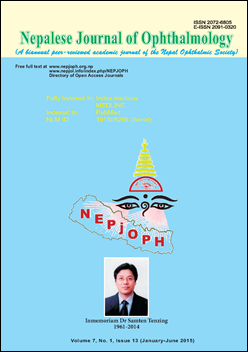Indicators for monitoring cataract surgery outcomes; evolution and importance
DOI:
https://doi.org/10.3126/nepjoph.v7i1.13144Keywords:
cataract, Vision 2020, cataract surgery, VQL, HQLAbstract
Cataract is one of the leading causes of blindness globally (Pascolini & Mariotti, 2012). Cataract surgery restores vision and is a cost-effective health intervention ranked second to the vaccination. In the ‘VISION 2020 -The Right to Sight’ initiative, cataract is given the highest priority so that member countries of the World Health Organization can eliminate avoidable blindness by the year 2020 (World Health Organization, 2007). From a public health perspective, the quantity and quality of cataract surgery is important. Hence, indicators to monitor cataract surgeries are both quantitative and qualitative. These indicators have changed along with the evolution of cataract services.
Downloads
Downloads
Published
How to Cite
Issue
Section
License
This license enables reusers to copy and distribute the material in any medium or format in unadapted form only, for noncommercial purposes only, and only so long as attribution is given to the creator.




